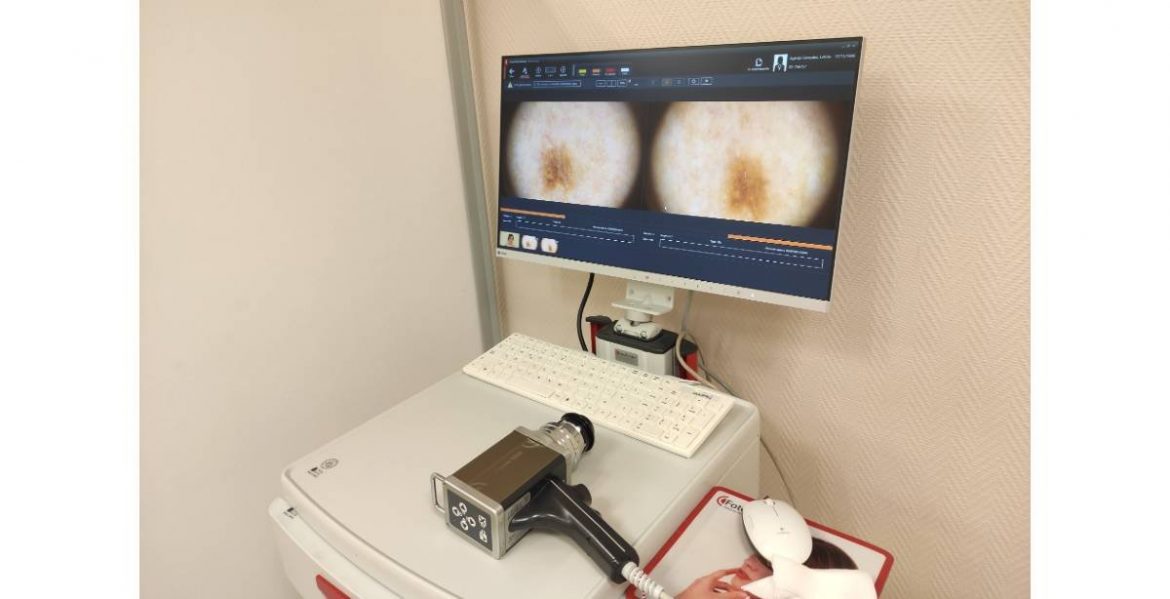Digital dermoscopy, commonly called “mole mapping” is the best way to check moles. How many times have you wondered how to tell if a mole on your back has changed or not? If you have several, the truth is that seeing small changes is not easy at all.
The realization of a mole map makes it easier to follow up in such cases. The system consists of a camera connected to a computer, where the images obtained during the scan are recorded, which will facilitate future revisions.
We take standard images and mark moles with arrows on them, which are also photographed at high magnification with polarized light (these images are the actual dermoscopic images).
Advantages of digital dermoscopy
Digital dermoscopy has a number of advantages that make it more effective than traditional mole check-up.
·DETECTS NEW MOLES
On the one hand, it allows us to photograph your entire body surface. In this way, the system records images where you can see the areas where there are moles, but also those where there are hardly any.
Basically, the idea is to “keep track” of as much of the body area as possible in order to evaluate possible changes over time. This makes it easier to detect new moles that appear after the first dermoscopy.
·DETECTS CHANGES IN EACH MOLE
On the other hand, since we record each mole individually, the procedure allows us to observe at each check-up, one by one, if the moles have changed shape, color, or any of the dermoscopic characteristics have changed.
If we have any doubts about a mole, we will always have a previous photo that will allow us to confirm if that mole is changing or if it was the same in the previous revision (which always gives us peace of mind).
·REDUCES THE NUMBER OF UNNECESSARY EXCISIONS
In people with a large number of moles, it is not uncommon to have several removed during their lifetime, either because of suspicion or because of small changes. Digital dermoscopy makes it possible to define much better the relevance of certain signs or changes, so that it “saves” removals.
In situations in which without it as a tool we might recommend removing a mole, digital dermoscopy, through the option of comparing with previous photos, can give us peace of mind. In this way, moles can be followed more closely and unnecessary excisions can be avoided.
When is it advisable to perform a mole mapping?
Not everyone needs to follow up closely with digital dermoscopy. If, for example, you have very few moles, it will be easy for you to observe yourself and detect changes (in shape, color or new moles). However, there are certain situations or personal characteristics in which digital dermoscopy helps greatly when performing mole checks:
- People with a large number of moles (more than 50)
- People with a family or personal history of melanoma.
- People with very fair skin or red hair, especially if they have suffered numerous sunburns throughout their lives.
